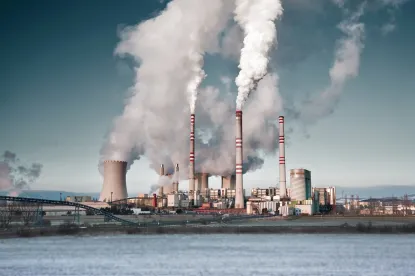On November 15, 2022, the United States Environmental Protection Agency (US EPA) issued the pre-publication version of supplemental proposed rulemaking for reduction of methane emissions in the oil and natural gas sector. The original proposed rule, published on November 15, 2021, sought to strengthen methane standards for new sources (New Source Performance Standards or NSPS), establish nationwide emission guidelines (EG) for regulation of existing sources, and develop new standards for unregulated sources. US EPA ultimately received more than 470,000 public comments. The rules, once finalized, will be included in 40 CFR Part 60, Subpart OOOOb (NSPS) and Subpart OOOOc (EG).
The agency anticipated a need for additional review in the original proposed rule, in which US EPA stated it would issue supplemental proposed rulemaking under its authority in the Clean Air Act sections 111(b) and (d). While the original rule already had an ambitious target of reducing methane by 74%, the supplemental proposal would reduce methane from covered sources by 87% below 2005 levels. The rule generally governs production and processing (i.e., well sites, compressor stations, and natural gas processing plants) as well as natural gas transmission and storage.
Key changes in the supplemental proposed rule include the following:
-
Super-emitter Response Program: Establishment of a super-emitter response program intended to reduce the risk of such events. Owners or operators that receive certified notifications of emissions greater than 100 kg/hr of methane would be required to take action.
-
Well Closure Plans: EPA will now require owners of well sites to submit a well closure plan that includes steps to plug wells, requires financial assurance, and includes a schedule to complete the closure and perform a final survey.
-
Advanced Methane Detection: In response to comments supporting advanced methane detection technologies, EPA has proposed a matrix where owners and operators have the flexibility to use approved alternative screening approaches with development of a plan and notification to the agency. The agency will further update the proposed protocol for optical gas imaging (OGI) in Appendix K.
-
Leak Inspection: EPA will now require identification and correction of leaks, a source of fugitive emissions, at all well sites, including new and existing. While EPA removed exemptions, the type of leak monitoring will vary depending on site characteristics and equipment in four primary categories: (1) single wellhead-only and small well sites; (2) wellhead-only sites with two or more wellheads; (3) sites with major production and processing equipment; and (4) well sites on the Alaska North Slope.
-
Flares: EPA will require flare flames to be lit at all times. Additionally, in order to flare, owners of oil wells with associated gas will be required to either implement alternatives permitted by the rule (such as routing to a sales line) or certify that alternatives are not safe or technically feasible.
-
Additional Regulated Sources: EPA has added strengthened standards for pneumatic pumps (zero-emission standard), updated standards for wet seal centrifugal compressors, and developed new standards for dry seal centrifugal pumps (currently unregulated).
Given the agency’s significant focus on environmental justice and community outreach, US EPA also seeks to provide more opportunities for vulnerable communities and Tribal communities to participate in the development of state plans. In fact, the agency held a webinar specific to Tribal communities and environmental justice communities on November 17, 2022. During the webinar, US EPA explained how the revised rule requires states to conduct meaningful engagement with vulnerable communities through early outreach and request for input. States developing plans for EG will be required to participate in “timely engagement with pertinent stakeholder representation . . . [i]t must include the development of public participation strategies to overcome linguistic, cultural, institutional, geographic, and other barriers to participation to assure pertinent stakeholder representation.”
The agency is also seeking additional insight from the regulated industry on advanced technologies that can be utilized to reduce methane and utilize associated gas. The original proposed rule requested public comment on a potential standard for oil wells with associated gas that would require owners or operators to route associated gas to a sales line or, alternatively, use it for another beneficial use. During this round of comments, US EPA now seeks to understand emerging technologies “that provide uses for the associated gas in a beneficial manner other than routing to a sales line, using as a fuel, or reinjecting the gas.”
The agency extended the timeline for a final rulemaking to 2023 and has issued new opportunities for public comment and training. Written comments are due to the agency by February 13, 2023 and can be submitted to Docket No. EPA-HQ-OAR-2021-0317. There will also be a series of public hearings on January 10-11, 2023 that require advance registration. To assist in preparation, US EPA published a document highlighting areas where the agency continues to seek public input. We are prepared to assist clients in engaging with the agency by providing comment and preparing for the final rule to be implemented next year.




 />i
/>i

